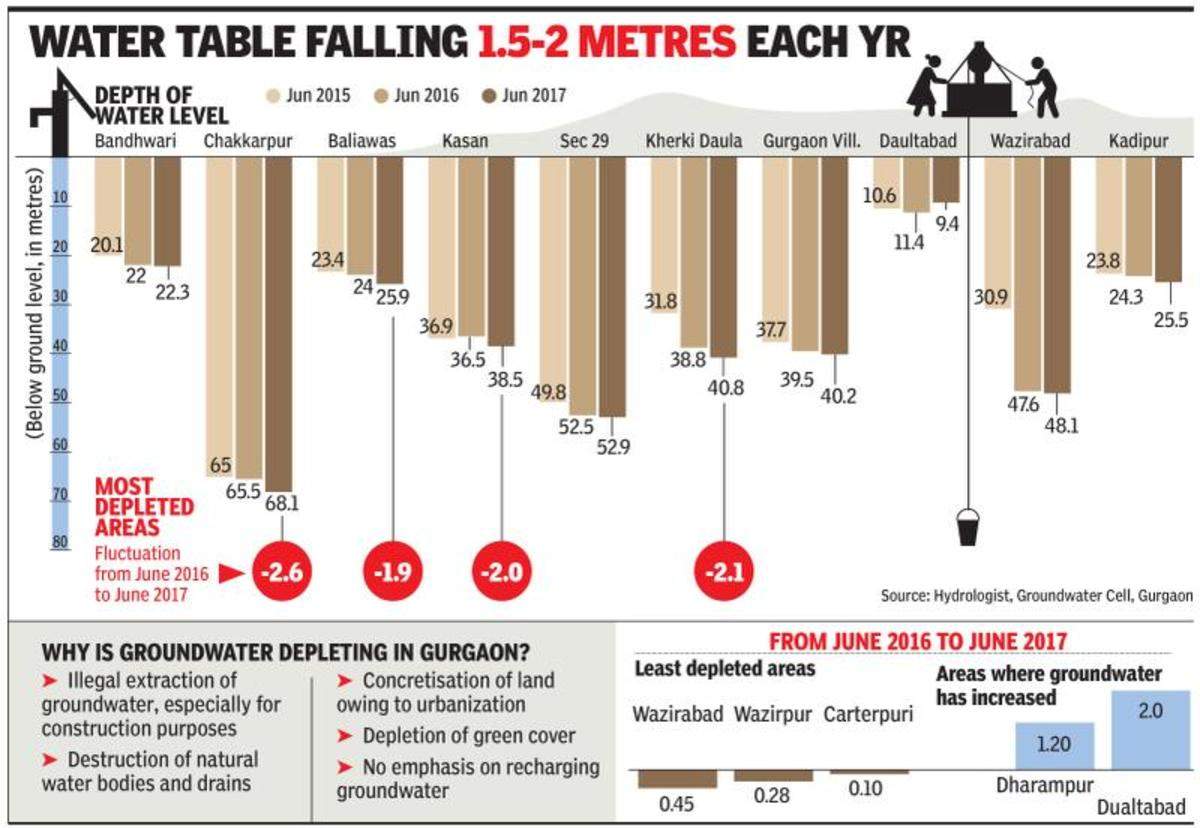

The National Green Tribunal (NGT) has come forward and directed the Central Pollution Control Board (CPCB) to “exercise its statutory power for prosecution” and take action against a private developer Ansal Properties and Infrastructure Limited in Gurugram for allegedly encroaching green areas and extracting groundwater illegally.


The directive came after NGT Justice Adarsh Kumar Goel took note of a report submitted by a tribunal appointed committee that pointed to deficiencies made by Ansal Properties and Infrastructure Limited, the project proponent for Sushant Lok, Phase-I, Gurugram.
The Bench said, “Compliance report has been filed indicating the steps taken. There is, however, nothing to show the exercise of statutory power for prosecution. The CPCB has suggested that the project proponent should furnish an action plan…”
It further added “A pollution board is entitled to disconnect the electricity and water supply and take measures for stopping illegal activities as condition for continuing consent to establish or to operate. Let such further steps be taken in accordance with law and further report be furnished.”
[related_post]
Illegal water extraction
The apex pollution monitoring body CPCB also suggest that the Central Ground Water Authority (CGWA) “should determine compensation for illegal extraction of groundwater.”
The directions came when the green panel was hearing a plea that alleged encroachment of green areas, extraction of groundwater and violation of other statutory norms by Ansal Properties.
The NGT had earlier constituted a joint committee comprising of representatives from the CPCB, CGWA, Town and Country Planning Department, Haryana, Delhi School of Planning and Architecture and the State Environment Impact Assessment Authority, Haryana.
Shushant Lok-1 was developed by Ansal API Limited in the late 1980s, and the colony is spread across sectors 27, 28, 43, and 52 of the city. The residents of Sushant Lok -1 have raised the issues of environmental violations, such as illegal groundwater extractions through tube wells, improper rainwater harvesting system and suchlike, from time to time.
In January, the NGT had directed the CPCB to take measures for the closure of the project, initiate prosecution and recover compensation for damage to the environment.
Gurugram has been in the news for quite some time for the drastic fall in groundwater levels, having crossed almost every measure of stressed levels a long time ago. According to the Haryana agricultural department’s own report, water levels have fallen by 3 metres in the period 2014-18, with groundwater extraction levels at a completely unsustainable 308% in Gurugram city. With water levels at 28 metres now (91.8 feet), for context, readers need to consider that the same levels were at 6.6 metres (21.6 feet) back in 1974. Since then, each year has seen a 0.5 metre drop bringing to the city to the precipice of a full scale disaster, as the impact of the dropping levels goes beyond just availability of water. Interestingly, if you check for historical levels, readers will notice a recent trend to denote the water level in metres, perhaps to soften the impact of the much higher numbers, if expressed in feet. Feet, metres or inches, the truth is that millennium city is heading for a crisis zone. The sooner it wakes up, the better, preferably before the onset of the monsoon this year.
Sustainability-focused venture builder Sustain Labs Paris (SLP) has collaborated with Posterity Institute and launched ‘SLP…
Japan’s trading giant Sumitomo Corporation has signed an MoU with Malaysian renewable energy conglomerate reNIKOLA…
Renewable energy conglomerate TotalEnergies has signed a Sale and Purchase Agreement (SPA) with HitecVision, a…
Nordic energy company Gasum has inaugurated its newest and largest biogas plant in the Swedish…
The Central Government has approved an additional allocation of 2.8 million tonnes of Food Corporation…
1. The mandate for blending Compressed Biogas (CBG) with natural gas has come into effect…